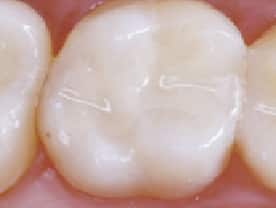Types of dental fillings
Dentistry has seen great changes in technology and materials used for dental fillings over the past few years. Let’s discuss the three main materials that have been used for fillings and how they differ from one another.
Amalgam
Amalgam silver-coloured dental fillings have been around since the 1800s. However, the type of material used today became most popular in the 1960s.
Amalgam is made up of a metal alloy of mercury, silver, tin and copper. It begins as a soft filling material that is placed into a prepared tooth and hardens over a short period of time.
It is a very reliable and durable material that was used for many years for dental fillings due to its success in a moist environment. However, the dark colour, its use of mercury and its difficulty to bond well to the tooth surface has driven a quest to find an alternative filling material. Additionally, amalgam expands and contracts and can cause cracks and fractures in the tooth as well as in the filling itself.
Amalgam is not as widely used today as there are some great alternatives.
Composite Resin
A very popular and common dental filling is composite resin, made up of glass particles mixed with an acrylic resin. It comes in different viscosities, each favoured by the dentist for different roles. Normally, a handheld “curing” light is used to set, or harden, the material once it has been placed. This gives the clinician a much longer working time for shaping and placement than other filling materials.
There are many advantages of composite resin over amalgam for filling teeth, including:
- Availability of multiples colour shades so the material can be matched to the tooth
- Increased working time for the clinician to manipulate the material to suit the tooth structure
- Mercury-free
- Composite resins are able to bond, or stick, to the tooth, which can lead to less tooth removal during preparation
- Easy to use for small and simple repairs and restorations
In some situations, amalgam is stronger and longer lasting than composite resin, but it may still not be the material of choice and this leads us onto our third material: porcelain.

Porcelain
Porcelain is a very strong, tooth-coloured material. At Smile Solutions, porcelain fillings are either made by our preferred laboratories offsite, or our CEREC (Chairside Economical Restoration of Aesthetic Ceramics) technology onsite.
Below are the advantages of porcelain for a dental filling:
- Porcelain fillings are very good for large restorations where strength is needed. Porcelain is also excellent in aesthetically returning the tooth to its natural shape
- Longevity and stability
- Colour-matching
- Stability
- CEREC porcelain dental fillings can be fabricated and placed all in one visit, on one day.
Porcelain filings can be dearer than amalgam and composite resin due to its superiority in certain dental fillings and the technology required to fabricate them.
After a thorough check-up and diagnosis, your dentist will discuss which of these materials is best suited to you. The decision will be based upon your oral health and what material will be best suited to the type of work needed, both for restoration to optimum function and appearance.
